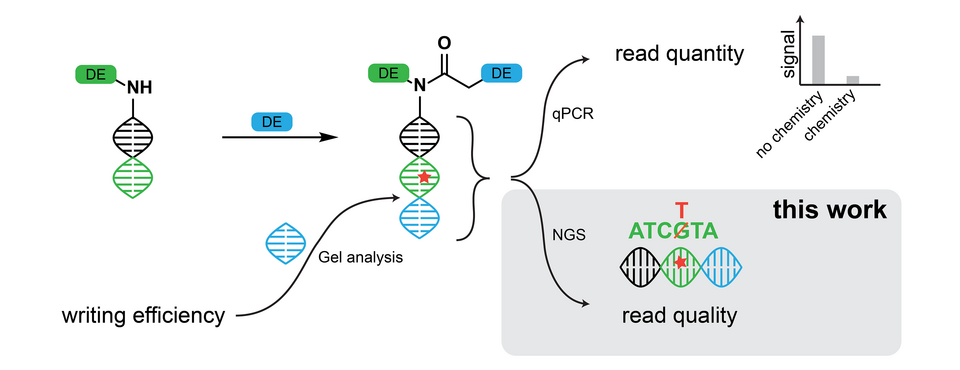/ News, Research, Publication
What have you done now? How chemical reactions can affect codon readout in DNA encoded libraries.

Chemical reactions can not only be detrimental to the amount of useful DNA in an encoded library, they also can affect the information that is stored.
Chemical reactions (such as the often used 'click' reaction using Cu(I)) can damage DNA during the construction of a DNA encoded library. So far, people have shown that such damage can influence encoding efficiency and reduce the total amount of amplified DNA (as measured by qPCR). But what happens with damaged DNA after it gets multiplied by PCR and sequenced?
Check out our newest (open access) publication on DNA encoded libraries quality control in Bioorganic & Medicinal Chemistry where we show that the Cu(I) click reaction leads to elevated mutational load, thus increasing the amount of wrongly read codons. We also analyse a chemistry-heavy DNA encoded library and show the mutational imprints it leaves on DNA parts that have been exposed to the chemistry.
